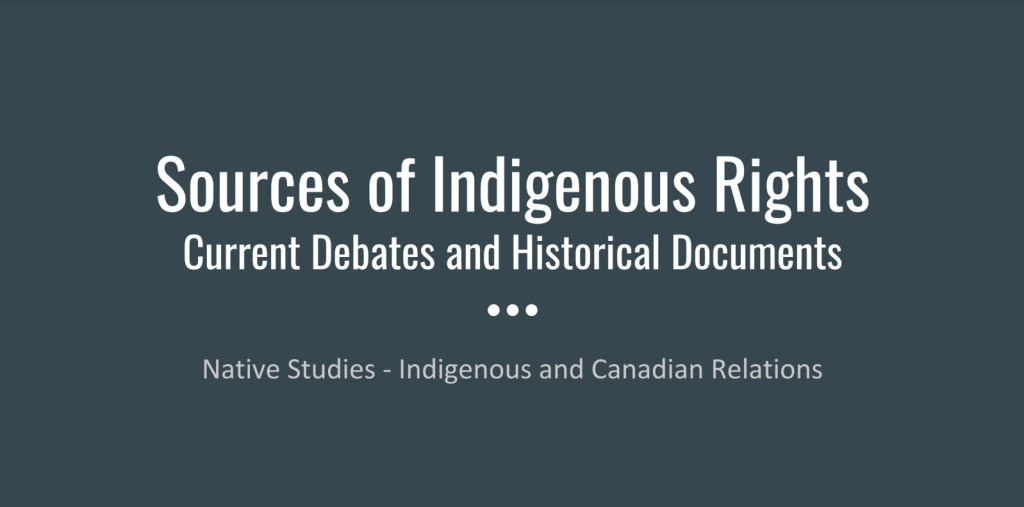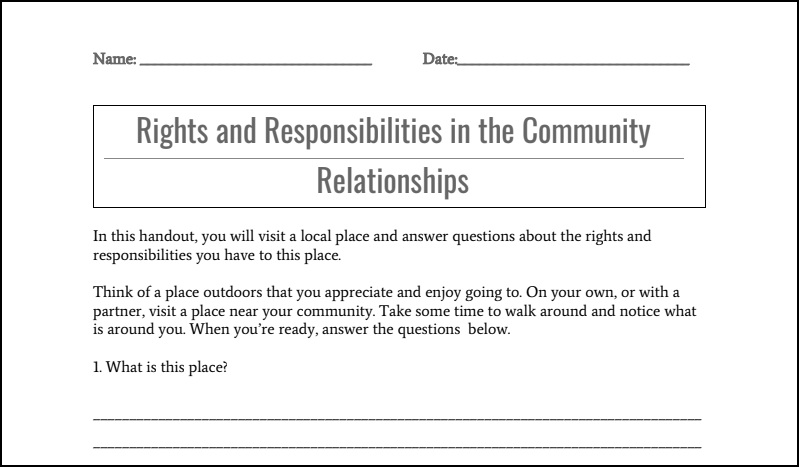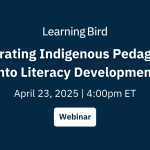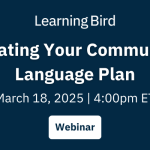Speaking about Indigenous Rights in Education
As educators, we speak about many different rights in our classroom. We talk about student rights, the Rights of the Child, the Rights of Citizenship, and Human Rights. There is another set of rights that we should talk about in education more often – Indigenous Rights.
But what exactly are Indigenous Rights? And what is the difference between Human Rights and Indigenous Rights? Even with the United Nations Declaration on the Rights of Indigenous Peoples (UNDRIP), it can be daunting to wade into this topic.
Resources on Indigenous Rights and UNDRIP
We created these resources in collaboration with Simon Jacob Memorial Education Centre. They explore Indigenous Rights and UNDRIP. You can use them to introduce the differences between Human, Indigenous, and Treaty rights. Learners will explore current debates about Indigenous Rights and their application. The final resource asks learners to explore their relationships, rights, and responsibilities to the land around them.
- Indigenous Rights and Different Perspectives on Indigenous Rights
- Indigenous Rights Case Study: Sources of Indigenous Rights
- UN Declaration on the Rights of Indigenous Peoples
- Rights and Responsibilities in the Community
Connecting UNDRIP to Current Events
Indigenous Rights and advocacy for these rights have been in the news recently. Your learners may be asking about actions and protests they have heard or seen happening across the country. Using these resources with your learners can give them a vocabulary to discuss Human and Indigenous Rights and the application of Indigenous Rights in their area and across the country. Learners will also have a base for learning about and advocating for Human, Indigenous, and Treaty Rights within and for their communities.
You can use these resources as a springboard for discussions about Human Rights issues that your learners may face in their communities. Knowing which rights are inherent Indigenous Rights instead of Human Rights can offer different insights into learners’ obstacles.
Indigenous Rights Lesson Plan
Here is one idea for using these resources in your classroom.
Before Starting
Activate learners’ prior knowledge of rights, Human Rights, Indigenous Rights, and Treaty Rights. Consider using a graphic organizer like a word web or Venn Diagram to organize learners’ thoughts or show connections between these terms.
Resource 1
Show learners the first resource: Indigenous Rights and Different Perspectives on Indigenous Rights.
Pause the video when it poses questions and provide time for learners to think about answers. You may ask learners to discuss in large or small groups or write answers individually to read later.
To Consider: As this is a video, you must ensure that all learners can see and hear it. Depending on your class make-up, this may include using a projector and speakers or providing devices and headphones to learners.
Continuation Activity
Consider showing learners various media coverage on topics related to Indigenous Rights. Examine and analyze the coverage. How does the media portray Indigenous Rights? Consider doing the same for media coverage of Human Rights issues. Explore differences between coverage of Human Rights issues overseas and in Canada.
Resource 2
Show learners the second resource: Indigenous Rights Case Study: Sources of Indigenous Rights.
Move through the slides as you feel appropriate. Pause to give additional information or explanation whenever necessary. You may wish to have learners answer the comprehension and discussion questions as a class, in small groups, or individually.
To Consider: As this is a presentation, you must ensure that all learners can see the slides. Consider using a projector or interactive whiteboard to display the presentation so all learners can see the slides and hear your explanations and information.
Continuation Activity
Depending on your learners’ age level and abilities, consider learning more about the Clyde River case. Explore what other cases this ruling has affected.
The case study focuses on the duty to consult, which has been an important topic in recent months. Explore how the Government of Canada is currently approaching its duty to consult. Ask learners to think about what the Government of Canada is doing right and what it could improve.
Resource 3
Show learners the third resource: UN Declaration on the Rights of Indigenous Peoples.
Play through the video, pausing where appropriate to give additional explanations or information.
To Consider: As this is a video, you must ensure that all learners can see and hear it. Depending on your class make-up, this may include using a projector and speakers or providing devices and headphones to learners.
Continuation Activity
The video asks learners to research to figure out why Canada did not immediately adopt UNDRIP. Consider providing learners the time to do so. Ask learners to report back with what they’ve learned.
To Consider: You may wish to have learners do this individually or in pairs. Regardless of which you choose, you will need to ensure that there are enough devices for each student/group to perform their research.
Resource 4
Show learners the fourth resource: Rights and Responsibilities in the Community.
Go through the instructions for this activity with learners. Support learners as needed.
You may wish to assign this as homework so learners can go to a place around the community that is particularly meaningful for them. Alternatively, you can organize a class outing somewhere nearby that learners can use as a basis for their reflections.
To Consider: For this activity, you will need to ensure that each learner has a copy of the handout.
Suggestions to Extend Learning
There are many different ways you can extend this learning. Extensions of learning will determine the focus you want learners to take. Some examples of further learning could be:
- Consider asking learners to explore UNDRIP in more detail to get a solid sense of what the rights it includes. Are there any inherent Indigenous Rights that are missing from the document?
- Consider comparing UNDRIP and the American Declaration on the Rights of Indigenous Peoples. What is similar between the two documents? What is different? Why is there a need for both documents?
- Ask learners to explain the difference between Human and Indigenous Rights in their own words. Ask them if there is any overlap between the two.
- As learners learn about their rights as humans and Indigenous people, ask them to choose a topic to speak out about. What right do they feel most needs attention right now? Have learners organize an educational session or protest to bring awareness to rights not upheld sufficiently in their community.
Have you used these resources in your class already? If so, how did you frame them? What types of discussions did you have with learners about Indigenous Rights? In what other ways have you addressed Indigenous Rights in your classroom in the past? Share your experiences teaching this important topic.









